
In the River OSHINO --Vol.51--
Brown Trout in Dream
After the first fly fishing in Oshino, I was still eager to master it. I often visited the fly area in Yohzawa, a fishing farm, to learn how to catch as many rainbow trout and yamame trout as possible. Then I went to mountain streams in Okutama and Tanzawa, where my confidence in the fishing farm was completely smashed; I could not see the fly. The fly did not float. Fish did not come to the fly. Fish did not appear at all although I would have easily caught them with lure.I searched for Western books and devoured anything on fly fishing. But what was said there was very different from what happened in Japan. I sometimes doubted that it would be possible to bring fly fishing to Japan.
Gradually fly fishing was mentioned in Japanese fishing magazines, too, even if a few words about it. However, to my disappointment, writers were very unsympathetic to fly fishing learners probably because almost all of writers were fans of Japanese traditional fly fishing method. In short, they said that Japanese yamame trout and char were too smart to catch with fly.
They were always negative to the fly line cast in a beautiful arc. They said that thick bright fly line would immediately drive sensitive Japanese trout in mountain streams away to hide. That was their regular conclusion.
I did not believe their conclusion because I caught some, even if a few, wild yamame trout and char after several months' practice.

A Japanese mountain stream was running rapidly and complicatedly. At a glance it looked difficult to fish here with dry fly, unlike the Chalk Stream in England. The fact was that it was easier here.
A Unique Japanese Style of Fly Fishing
On the other hand, most of Japanese pioneers of fly fishing also said that dry fly fishing was impossible in Japanese mountain streams because they were so different from Western rivers with gentle flow and smooth surface. It meant that Western method was not applied to Japan.In today's words, they must say that the fly cannot drift drag-free in Japanese mountain streams with complicated flow.
Then they suggested a unique Japanese style of fly fishing; Fly line should be as short as possible to avoid touching the surface. Leader should not touch the surface, either, if possible. It is the most desirable that the fly is drifting as if it were hanging down from the rod tip or pulling upstream against the stream by the rod.

At first I was at a loss as to what to do at the bank. My fly could not float, be seen or drift properly.
I thought, however, their suggestion meant Japanese traditional fly fishing method with Western tackles. In my view it had a disadvantage because Western fly rod was shorter than Japanese traditional fly rod.
Actually, when I first visited Yohzawa I was surprised to know that more fly fishermen walked into the river or stood near the point than anglers of Japanese traditional fly fishing method. As you know, a lot of grownup hatchery fish are released in the fishing farm. Those fish are not afraid of fishermen but how about wild fish? Wild fish must run away even when anglers carelessly draw near to the waterfront, much more walk into the river.
I had not got enough experiences to say more in those days. But I noticed one thing. Some photos of fly fishing in the mountain stream in Western books were just like Japanese ones. Mountain streams are not limited to Japan. That was why I could not believe ?ga unique Japanese style of fly fishing?h. It seemed to me that the similar idea appeared and disappeared every several years. ?gA unique Japanese style?h might sound excellent, based on Japanese environment but it means that it is not internationally accepted, as is often pointed out among the sporting world. I want to say that there is no unique Japanese style.

Char were said to be very timid and cautious but I realized it was wrong when I caught them. It was just in some anglers' imagination that char were afraid of bright-coloured line.
Beautiful Fly Fishing and Catching Fish
Regardless whether fish run away or not, I like to see the fly line cast in a beautiful arc. I devised and practiced a lot to master beautiful casting. I practiced 5m casting, then 10m, 11m and so on. I enjoyed practice and development of my skill. I felt happy just to see over 10m line running on the surface in a beautiful arc but, ah, I caught no fish.I want to cast the line beautifully and also catch fish. Otherwise, fly fishing was not my fishing. I really longed for that but had to face the hard reality.
Then sometimes the fly floated on the surface and drifted in a natural way although it happened only sometimes and did not last long. Is it what the book described as natural drift? So I asked myself. It was sure that fish came to the fly quite often in those cases.
However, I could not make further development. My fly sank very soon or rarely settled on my target point. I wanted to know fly fishing but not Japanese traditional fly fishing method. I wanted to cast the line far away in a beautiful style, make natural drift of the dry fly and beautifully catch the fish that come to the surface.
I always thought how to improve my fly fishing but lack of information and experience was still the great obstacle to progress.
To enjoy proper fly fishing I had to wait for another several years until water repellent dressing for the dry fly and tapered leader were introduced.
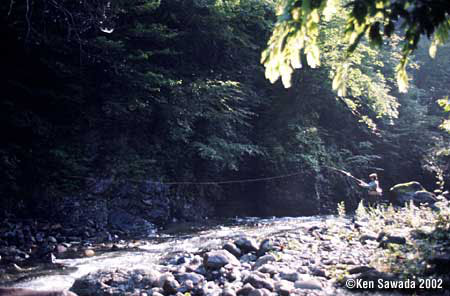
It was the greatest joy to cast the line beautifully and catch a fish.
Reedy Marshes
In the off-season I read Western magazines and books again although only a few of them were available. Then I noticed one thing. Some of the river photos were very similar to the scenery of Oshino. The explanation said they were the Chalk Stream. I did not know what was meant by chalk but the river flows were very similar to Japanese ones.Well, the fly must float well on such smooth surface and natural drift must be easy.
Perhaps that river in Oshino is suitable for fly fishing. It was quite possible I overlooked something important there. I could not wait for the season to come. In the end of March, 1970 I went to Oshino to make sure whether my guess was right.
It was a little after noon. I turned the National Route and drove through the pine wood. There remained a lot of snow on both sides of the road. Turning a big curve, I found the well-remembered barrier of the artificial dam. At my first visit it looked like a pond, whereas today it looked just like the Chalk Stream in the photos. After parking the car I wore wellington boots and crossed the muddy road to the river.
The right bank lay high like a hill, covered half with a pine wood and half with a field. Standing at the edge of the hill I had a good view of the top of the barrier of the artificial dam. It was a shallow and big pond. It was a river but there was no sound of running water. The right bank was so thickly covered with withered reed that the waterfront was not seen. Half of the opposite bank was in the shadow of the mountain. There were some remaining snow, some bunches of reed and some spreading branches of large wild rose.
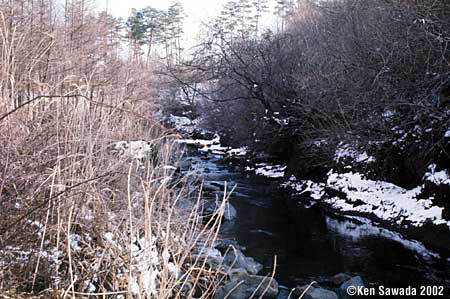
The river in Oshino in March. In the beginning of 1970's the lower reaches of the river was covered with thickets. There was a little amount of the water but a lot of brown trout were staying.
A dead leaf came flowing on the surface. The river looked like a pond but it taught me that the water flowed much more than I had expected. I walked down the embankment and went to the waterfront, pushing the reed aside. The river bottom was seen through and found suddenly deep off the shore. I walked upstream, pushing the reed aside again. Reed became less thick and the river made a right-angled turn to the left. Then steep slopes with miscellaneous small trees were stretched and I could not walk farther upstream. I stood there to see the scenery for a while.
I felt something move in the water. It came to me from the right side, the lower reaches of the river. It stopped in front of me at the corner of the right-angled turn. I held my breath. It was a trout about 60cm long. Black speckles spread from its olive back to its side and big star-like patterns trimmed with pale blue line were also seen clearly among speckles. It was definitely a brown trout. Although I saw a real one for the first time I recognized it immediately. It had a big face and a crooked lower jaw. It must be a male one. I could not move but kept an eye on it. The brown trout was staying quietly in front of me, only 3m away.
-- To be continued --
- NET SHOP INFORMATION
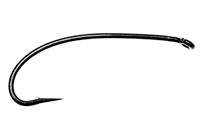
SL6 Black Spey Hooks
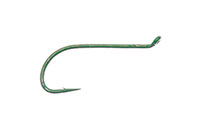
DU3 Limerick Spinner Hooks
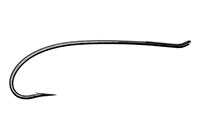
SL4 Single Bartleet Hooks
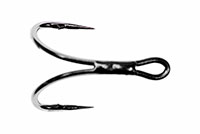
XD1 Tube Fly Double Hooks
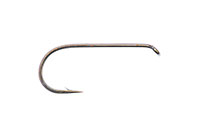
DD2 Flat Perfect Hooks
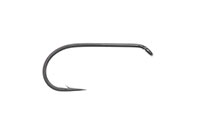
DD1 Black Terrestrial Hooks
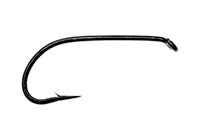
TD4 Old Limerick Wet Hooks
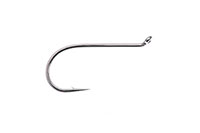
DU1 Silver May Hooks
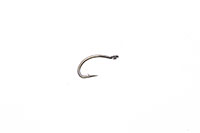
MU1 Flat Midge Hooks
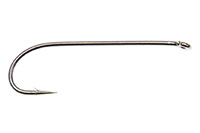
LD3 Long Limerick Hooks
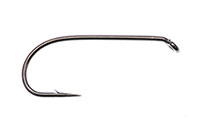
TD2 Summer Sproat Hooks
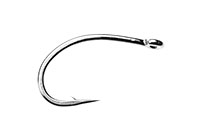
XS1 Tube Single Silver Hooks
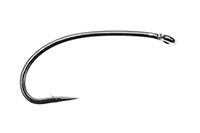
TD6 Siver Sedge Hooks

SL5 Black Spey Hooks

DU3 Limerick Spinner Hooks
- TROPHY CLUB
- FLY SHOW
- EXHIBITION
- MASTERS`
- FLY DRESSING CONTEST Archives
- TRAVELLER Archives
- TACKLE IMPRESSIONS Archives
- ANGLERS` PHOTO GALLERY Archives
- ----------------------------------------------
- トロフィークラブ
- フライショー
- エキシビション
- マスターズ
- フライドレッシング・コンテスト・アーカイヴ
- トラヴェラー・アーカイヴ
- タックル・インプレッション・アーカイヴ
- アングラーズ・フォトギャラリー・アーカイヴ
株式会社サワダ 185-0021 東京都国分寺市南町3-13-4
SAWADA'S INC. 3-13-4 Minamicho, Kokubunji, Tokyo 185-0021, Japan
写真・ドキュメントの無断転載を禁じます。
All the images and documents found on this site are owned by Ken Sawada and may not be used without permission.
But, link to this site is FREE.
Copyright © 2000 - 2024 SAWADA'S INC.. All rights reserved.
SAWADA'S INC. 3-13-4 Minamicho, Kokubunji, Tokyo 185-0021, Japan
写真・ドキュメントの無断転載を禁じます。
All the images and documents found on this site are owned by Ken Sawada and may not be used without permission.
But, link to this site is FREE.
Copyright © 2000 - 2024 SAWADA'S INC.. All rights reserved.
